SECO/VACUUM | A Low-Distortion 4D-Quench System
A Low-Distortion 4D-Quench System
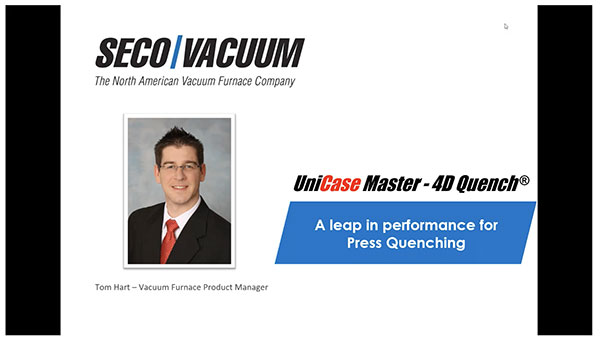
I'd like to go ahead and dive head into today's presentation, “low-distortion 4D Quench®, A Leap in Performance over Press Quenching”.
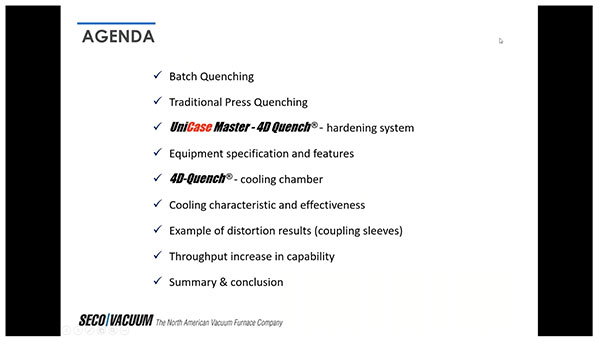
So, a little bit about today's agenda. We're gonna talk a little bit, real briefly, about quenching, batch quenching, traditional press quenching, and of course, our low distortion 4D Quench hardening system. We’ll then go into the equipment specifications and features. And then dive into the 4D Quench cooling chamber. After that, we'll go into the cooling characteristics and effectiveness; an example of a coupling sleeve with some distortion results; and then the increase in throughput, the capabilities there; and then summarizing and concluding the presentation at the end.
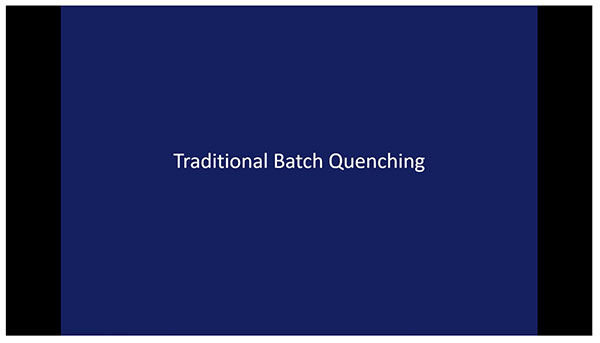
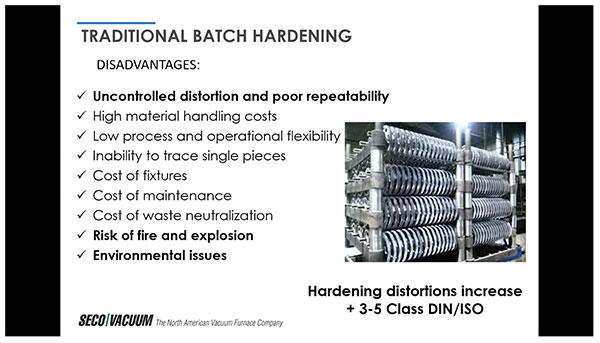
So, traditional Batch Quenching – as many of you mostly will understand, there's many disadvantages to batch quenching. You have an uncontrolled distortion and poor repeatability. There are high material handling costs. There's low process and operational flexibility. You have the inability to trace single pieces. You have high costs in fixtures, high costs in maintenance. You have costs to neutralize waste. And then, of course, the equipment is fairly unsafe with the risk of fire and explosion. And of course, there are the environmental issues associated with the equipment. The hardening distortions can increase the component up to three to five classes of the DIN/ISO standard.
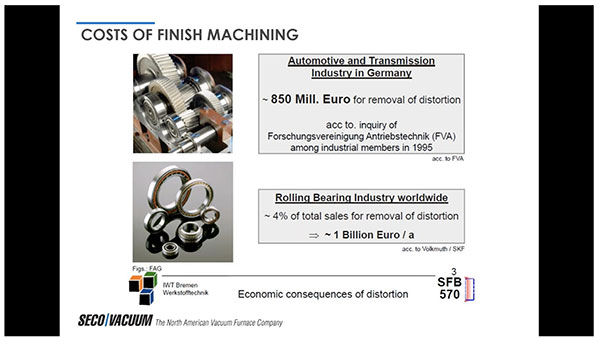
Now I'd like to talk about some costs of finished machining. There was a study done by a German group back in the mid-90s that discussed the approximately 850 million euros, which is around a billion US dollars, for removal of distortion. And in the roller bearing industry alone, 4% of the total sales were associated with the removal of distortion. So, what's that mean? Back in 1995, in Germany, they had approximately $2 billion a year with costs associated to finish machining. And when you extrapolate that to 2019, we have almost $22 billion per year just for the removal of distortion and the cost of finish machining.
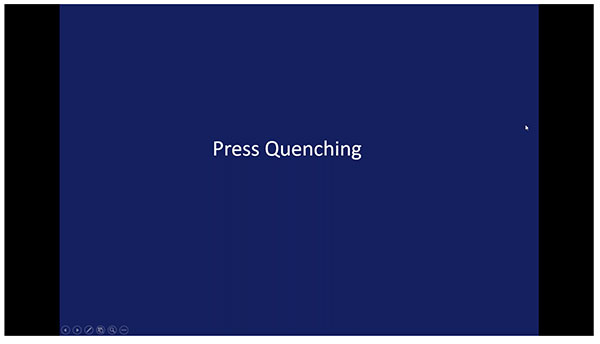
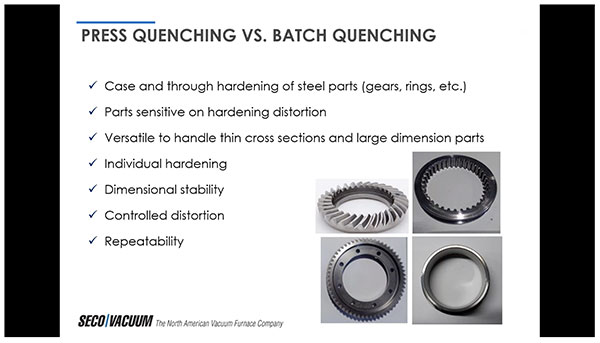
Now, one of the ways to control distortion is Press Quenching, a very popular method that is very good, especially in comparison to batch quenching, for case and through hardening of steels. It typically handles gears, rings, etc. It takes parts that are very sensitive for hardening distortion. It's versatile so that it can handle thin cross sections and large dimensional parts. It performs individual hardening and keeps dimensional stability, control distortion and it's repeatable. So, it's a very, very widely used process.
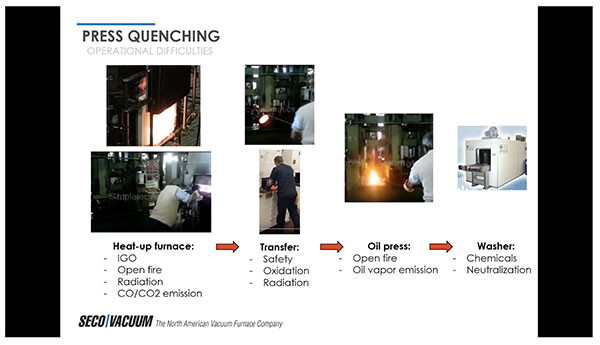
However, there are operational difficulties associated with press quenching. You have the heat up furnace that produces IGO which is integrating older oxidation. It has open fires, radiation and carbon emissions. You have the transfer from the furnace to the oil press. And with that operation, there's many safety risks. The part is subject to oxidation. And of course, you have the radiation coming off of the part as well. The oil press itself has the open fire as it’s quenching and oil vapor emissions. And then lastly, you must clean off the parts after quench which means you have to have many chemicals and the neutralization of those chemicals as well.
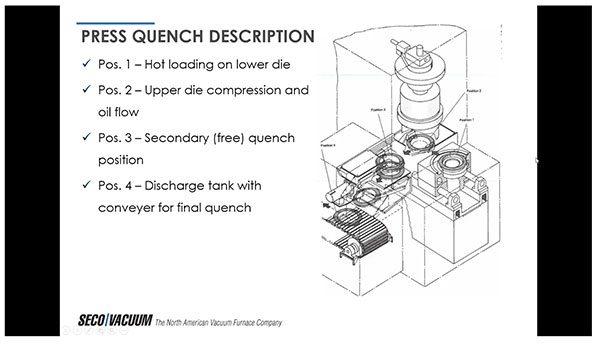
The press quench equipment itself – here's a reference illustration that has position number one where the hot part is lowered into the die. Position two is the upper die compression and oil flow. Position number three – you have the secondary quench position. And lastly, the discharge tank with conveyor for final quench.
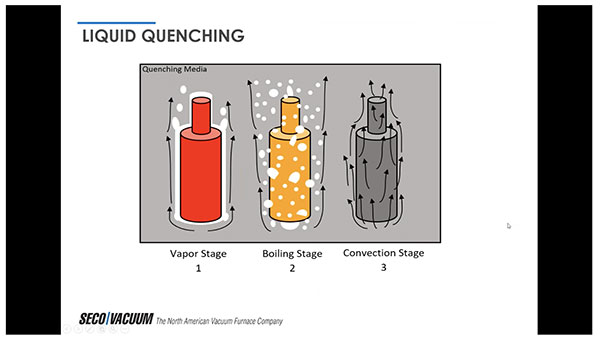
Now in oil quenching, you have three phases. Stage number one is a vapor stage where a vapor barrier is actually surrounding the part and at that point, the temperature in the part is not as uniform. The boiling stage is next, and lastly a convection stage. So you have these different stages in the quenching which are actually not very well controlled.
To continue and view the full audio/visual presentation in its entirety, register here: https://register.gotowebinar.com/recording/3118969642062944267




